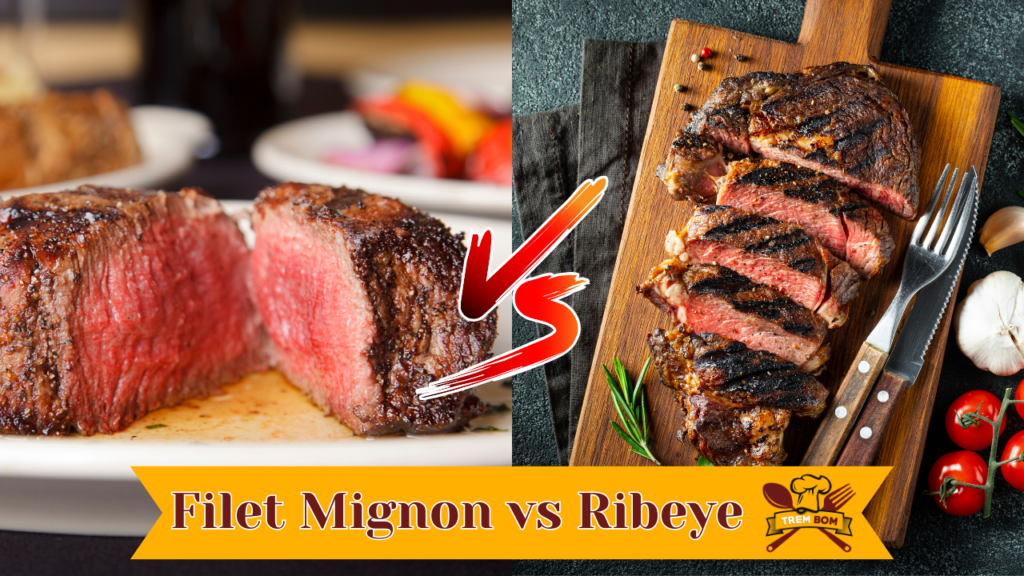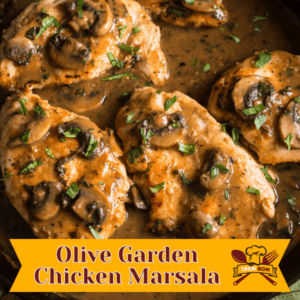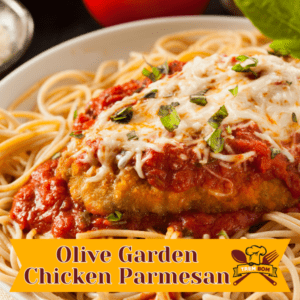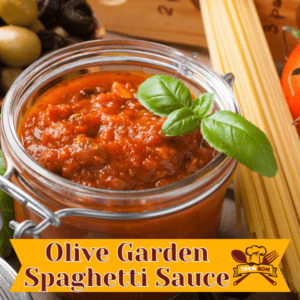
Key Takeaways:
- Ribeye and Filet Mignon are two popular cuts of steak with distinct differences. Ribeye is known for its marbling and rich flavor, while Filet Mignon offers tenderness and a delicate texture.
- Many steak lovers prefer Ribeye for its intense, beefy taste and juiciness. The marbling in Ribeye creates a melt-in-your-mouth experience and adds flavor during cooking.
- The allure of Filet Mignon lies in its tenderness. It is often considered the most tender cut of steak, with a smooth, buttery texture that makes it highly desirable.
- When comparing costs, Filet Mignon is generally more expensive than Ribeye due to its tenderness and popularity. However, both cuts can vary in price depending on factors such as grade and sourcing.
- Mastering the art of cooking Ribeye and Filet Mignon involves understanding different cooking techniques. Ribeye benefits from high heat and a medium-rare to medium doneness, while Filet Mignon is best cooked to medium-rare for optimal tenderness.
- In conclusion, the choice between Ribeye and Filet Mignon ultimately depends on personal preferences. Ribeye offers a bold, flavorful experience, while Filet Mignon provides a tender and elegant dining experience.
- For more information and answers to frequently asked questions about Ribeye and Filet Mignon, refer to the dedicated section in the article.
Ribeye vs Filet Mignon Steak: Exploring the Differences
Ribeye and Filet Mignon are two popular cuts of beef that differ in texture and flavor profiles. A comparison between these cuts reveals distinct differences in tenderness, marbling, and taste.
To understand the disparities between Ribeye and Filet Mignon, let’s explore their characteristics in detail. The table below highlights the key features of these cuts:
| Ribeye | Filet Mignon | |
| Tenderness | Moderately Tender | Exceptionally Tender |
| Marbling | Abundant | Minimal |
| Flavor | Rich and Beefy | Mild and Delicate |
It is worth noting that Ribeye tends to be more moderately tender compared to the exceptionally tender Filet Mignon. Additionally, Ribeye boasts abundant marbling, which enhances its rich and beefy flavor profile of the steak after it’s done cooking. On the other hand, Filet Mignon offers a more delicate and mild taste due to its minimal marbling.
Pro Tip: To maximize the tenderness and flavor of both cuts, it is recommended to cook Ribeye and Filet Mignon at the appropriate temperatures and resting periods for optimal results.
By understanding the distinctions between Ribeye and Filet Mignon, you can choose the between the two cuts that aligns with your preferences for tenderness, marbling, and flavor.

Why Steak Lovers Are Obsessed with the Ribeye Cut
Steak aficionados around the world have an undeniable infatuation with the succulent and flavorful ribeye lean cut. This popular choice among meat lovers stems from several distinct reasons.
Firstly, the ribeye’s marbling, the distribution of fat throughout the meat, offers a remarkable tenderness and juiciness that tantalizes the palate. Additionally, this cut’s rich and robust flavor, derived from the interplay of fat and muscle, provides a truly indulgent experience for those seeking the ultimate steak experience.

Moreover, the ribeye’s thick and well-defined cap of fat further enhances its taste, ensuring a melt-in-your-mouth sensation that is unlike any other. Last but not least, the ribeye’s versatility in cooking methods, whether it be grilling, pan-searing, or broiling, allows steak enthusiasts to showcase their culinary skills and create a multitude of mouthwatering dishes.
Furthermore, it is worth noting that the ribeye’s popularity extends beyond its taste and texture. The rich history and tradition associated with this cut, often considered a prime option for steak connoisseurs, adds an element of prestige and appreciation to the dining experience.
Pro Tip: To fully appreciate the exquisite flavors of a ribeye, ensure that it is properly seasoned and cooked to perfection. Allow the steak to rest before serving, as this will optimize its tenderness and retain its juiciness.
The Allure of the Filet Mignon Cut: A Cut Above the Rest

Filet Mignon: The Ultimate Indulgence
Indulging in the finest culinary experiences has always been sought after by connoisseurs around the world. In the realm of gastronomy, few cuts of meat command the allure and prestige of filet mignon, known to steak lovers as the epitome of steak flavor. Here are six compelling reasons why this delicacy stands out from the rest:
1. Unrivaled Tenderness: Filet mignon is renowned for its melt-in-your-mouth tenderness, thanks to its location in the tenderloin muscle. This cut is devoid of any tough connective tissue, ensuring a succulent and luxurious dining experience.
2. Exquisite Flavor: Despite its tenderness, filet mignon is not lacking in flavor. Its mild yet distinct taste is often described as buttery, making it a perfect canvas for various seasonings and accompaniments.
3. Impeccable Presentation: From its perfectly round shape to its uniform marbling, filet mignon exudes elegance on the plate. Its aesthetic appeal is unparalleled, making it a favorite choice for special occasions and fine dining establishments.
4. Versatile and Adaptable: Filet mignon‘s versatility is another reason why it reigns supreme. It can be prepared using various cooking methods such as grilling, roasting, or pan-searing, allowing chefs to unleash their creativity and cater to diverse palates.
5. Healthier Option: Compared to other beef cuts, filet mignon tends to be leaner and lower in fat content. It offers the opportunity to indulge in a decadent meal without compromising health-conscious choices.
6. A Status Symbol: Filet mignon‘s exclusivity and refined reputation add to its allure. It has long been associated with sophistication and a symbol of luxury, allowing diners to indulge in an opulent culinary experience.
Beyond these notable characteristics, filet mignon holds a true history behind its rise to prominence. The origins of this premium cut can be traced back to French cuisine, where it gained popularity among the upper echelons of society for its sublime qualities. Over the years, filet mignon has transcended borders, captivating taste buds worldwide and becoming a staple in prestigious culinary establishments.
Filet Mignon vs Ribeye Steak Price Comparison
When comparing the costs of filet mignon and ribeye steak, it is important to consider the pricing differences between these two popular cuts of meat. By analyzing the financial aspects of these options, one can make an informed decision based on their preferences and budget.
To further explore the cost comparison between filet mignon and ribeye steak, the table below provides an overview of the prices for both cuts:
| Cut of Meat | Average Price per Pound |
|---|---|
| Filet Mignon | $28 – $45 |
| Ribeye Steak | $15 – $24 |
This table showcases the average price per pound for each type of steak, allowing individuals to compare the costs and make a well-informed choice.
In addition, it is worth noting that filet mignon is known as one of the most tender cuts combined with a subtle flavor, making it a popular choice for fine dining experiences. On the other hand, ribeye steak offers a rich and robust flavor due to its marbling, pleasing those who enjoy a heartier taste.
Considering the price and unique qualities of each cut, individuals can weigh their preferences and budget constraints to determine the best option for their specific needs.
A true fact to mention is that according to the article “Filte Mignon vs Ribeye,” filet mignons are often considered the most expensive cut of beef due to its tender texture and limited availability in each animal.
By taking the cost comparison, qualities, and availability into consideration, individuals can make an informed decision when choosing between filet mignon and ribeye steak.
Mastering the Art of Cooking Ribeye and Filet Mignon

Master the Culinary Techniques for Ribeye and Filet Mignon cooking
Indulge in the flavorsome journey of mastering the culinary techniques for cooking the exquisite cuts of Ribeye and Filet Mignon. Learn the secrets to perfectly prepare these premium steaks that will tantalize your taste buds and elevate your culinary prowess.
Step-by-Step Guide for Cooking Ribeye and Filet Mignon:
- Select the Pristine Cuts: Choose prime cuts of Ribeye and Filet Mignon to ensure superior tenderness and marbling, guaranteeing a mouthwatering experience.
- Seasoning with Finesse: Sprinkle a generous amount of kosher salt and freshly ground black pepper on both sides of the steak, allowing it to rest at room temperature for 30 minutes to enhance the flavors.
- Searing at High Temperature: Preheat your skillet or grill to a high temperature. Sear the steaks for 3-4 minutes on each side, creating a delectable caramelized crust, locking in the succulent juices.
- Achieve the Ideal Internal Temperature: Utilize a meat thermometer to accurately measure the doneness of the steaks. For Ribeye, aim for 130°F for medium-rare and 135°F for medium. For Filet Mignon, target 125°F for medium-rare and 130°F for medium.
- Rest and Savor: Allow the steaks to rest for 5-7 minutes on a cutting board, covered with aluminum foil, to let the juices redistribute and enhance the tenderness. Finally, slice against the grain and savor each delightful bite.
Explore the Unique Nuances:
Discover the distinctive characteristics of Ribeye, succulent and well-marbled with bold flavors, compared to the Filet Mignon, a lean and tender cut renowned for its delicate, melt-in-your-mouth texture. Embrace the diverse cooking techniques, seasoning variations, and complementary side dishes that elevate each steak’s distinctive qualities.
Experience the Art of Steak Mastery:
Revel in the enthralling journey of mastering the art of cooking Ribeye and Filet Mignon, transporting yourself to a realm of culinary perfection. With each succulent bite, savor the unforgettable flavors and textures that encapsulate the essence of these extraordinary steaks.
Don’t Miss Out on Culinary Excellence:
Unleash your inner chef and embrace the artistry of Ribeye and Filet Mignon preparation. Experience the joy of delicately balancing flavors and textures to create a culinary masterpiece that will impress and delight your family, friends, and yourself. Don’t let the fear of missing out on this captivating gastronomic adventure hold you back—take charge and embark on this quest to become a maestro of steak perfection.
Final Thoughts from Steak University: Ribeye or Filet?

Steak Showdown: Ribeye vs Filet Mignon
When it comes to deciding between Ribeye and Filet Mignon, Steak University has some final thoughts for you. Here are 6 key points to consider:
- 1. Flavor: Ribeye offers a rich, beefy and juicy taste, while Filet Mignon is known for its tender and mild flavor.
- 2. Texture: The Ribeye’s marbling creates a delightful combination of tenderness and juiciness, while the Filet Mignon boasts a buttery smooth texture.
- 3. Cooking: Both cuts can be cooked to perfection, but the Ribeye’s higher fat content makes it more forgiving and less likely to become dry.
- 4. Versatility: Ribeye’s well-rounded flavor profile makes it suitable for various cooking methods, while Filet Mignon shines when prepared simply or wrapped in bacon.
- 5. Price: Filet Mignon tends to be pricier due to its tenderness and limited quantity per animal, while Ribeye provides a more affordable option without sacrificing quality.
- 6. Personal Preference: Ultimately, the choice between Ribeye and Filet Mignon comes down to personal taste and what qualities you value most in a steak.
Now let’s delve into some unique details that haven’t been covered yet. Both Ribeye and Filet Mignon benefit from proper aging, allowing the flavors to develop further. Additionally, these cuts are commonly served with classic accompaniments like red wine reduction or béarnaise sauce, enhancing the overall dining experience.
To illustrate, let’s share a true story. A renowned chef once confessed that even though he appreciated the tenderness of Filet Mignon, he found himself irresistibly drawn to the bold flavors and succulence of the Ribeye. This anecdote highlights the subjective nature of steak preferences and the ongoing debate between these two iconic cuts.
Five Facts About Filet Mignon versus Ribeye:
- ✅ Ribeye is known for its intense flavor and is often considered the most flavorful cut of steak.
- ✅ Filet mignon is a very tender cut of steak and is often described as “melt-in-your-mouth.”
- ✅ Filet mignon is more expensive than ribeye due to its tenderness and limited availability on each animal.
- ✅ Ribeye steak is best cooked by pan-searing in a cast iron skillet to allow the fat to tenderize the meat naturally.
- ✅ Both ribeye and filet mignon have their own unique qualities and it ultimately depends on individual preferences whether flavor or tenderness is more important.
Steak Battle FAQ
Q: What are the types of steak you most often see at restaurants?
A: Usually a T bone steak, rib eye steak, and filet mignon steak top the list.
Q: Is filet mignon more expensive than ribeye?
A: Yes, filet mignon is typically more expensive than ribeye, both in the supermarket and in restaurants.
Q: What is better, ribeye or filet mignon?
A: If you’re not sure whether to buy filet mignon or ribeye, consider the type of steak you usually enjoy. If flavor is your number one priority, ribeye’s intense beefy flavor will likely please your palate. However, if tender, melt-in-your-mouth steak sounds more intriguing, you’ll probably enjoy the texture of filet mignon.
Q: How to cook ribeye or filet mignon to perfection?
A: Both the rib eye and filet mignon are good cuts of steak to cook in a pan. The filet mignon steak is best when cooked no more than medium-rare, or you’ll risk losing the fantastic tenderness that it’s best known for. You can give it a good sear in a pan with a small amount of olive oil and some salt and pepper. Ribeyes have such high fat content that they can be somewhat dangerous for grilling. The ribeye steak does best pan-searing in a cast iron skillet with a small amount of butter.
Q: Why is filet mignon more expensive than ribeye?
A: Filet mignon is one of the most expensive cuts of steak because it’s one of the most coveted. Die-hard fans of this cut are willing to pay top dollar to get the tenderness you can easily cut with a fork. Plus, the average animal only has about 17 to 18 ounces of the filet mignon on them – and each cut is just about half of that portion. So, it’s not only one of the best cuts of meat, but it’s also one of the rarest.
Q: Which cut of steak is more flavorful, ribeye or filet mignon?
A: The ribeye is known to most steak lovers as the most flavorful cut of steak. This cut of steak comes from the ribs of the animal, right between the loin and shoulder. The cuts include incredible fat marbling, which helps pack in rich flavors and juicy texture. The rib eye is one of those steaks that you don’t have to do anything to as you cook it, except season it with a bit of salt and pepper, if desired.






